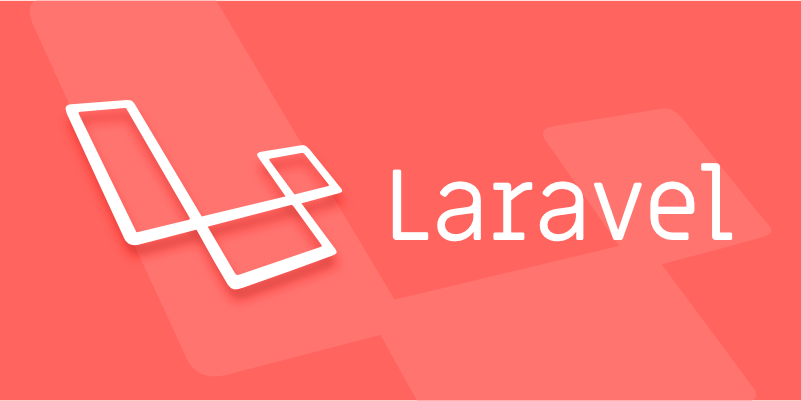How to use anonymous components in Blade in Laravel?
Create a Blade file (such as alert.blade.php) located in the resources/views/components directory as anonymous components; 2. Call components using kebab-case syntax in the template, such as

In Laravel Blade, anonymous components are a lightweight way to create reusable component views without needing to define a full PHP class. They're perfect for simple, presentational components like alerts, buttons, or cards that don't require complex logic.

Here's how to use anonymous components in Blade:
✅ 1. Create the Component View
Anonymous components are stored directly in the resources/views/components directory (or subdirectories). You don't need a PHP class.

For example, create a file at:
resources/views/components/alert.blade.php
<!-- resources/views/components/alert.blade.php -->
<div class="alert alert-{{ $type ?? 'info' }}">
{{ $slot }}
</div>This uses:

-
$slotfor the main content. -
$typeas a variable you can pass in.
✅ 2. Use the Component in Any Blade Template
You can now use it like any Blade component using kebab-case:
<x-alert type="error">
Something went wrong!
</x-alert> Blade automatically maps the component name ( alert ) to the corresponding view in the components directory.
✅ 3. Use Nested or Scoped Components
You can organize components in subfolders. For example:
resources/views/components/forms/input.blade.php
Then use it with dot notation:
<x-forms.input name="email" type="email" />
This will render the input component from the forms subdirectory.
✅ 4. Access Component Attributes
Inside the component, you can access any passed attributes using the special $attributes variable.
Example ( components/button.blade.php ):
<button {{ $attributes->merge(['class' => 'btn btn-primary']) }}>
{{ $slot }}
</button>Usage:
<x-button class="btn-danger" type="submit">
Delete
</x-button> This merges the default class with any passed class , and includes other attributes like type .
✅ 5. When to Use Anonymous vs. Class-Based Components
Use anonymous components when:
- The component is purely presentational.
- You don't need lifecycle hooks or complex logic.
- You want a quick, reusable template snippet.
Use class-based components when:
- You need to manipulate data in the
mount()method. - You're using Livewire or need state management.
- You want to use advanced features like listeners or validation.
Summary
Anonymous Blade components are great for:
- Simple UI elements.
- Faster development without boilerplate PHP classes.
- Keeping your templates clean and reusable.
Just place a .blade.php file in resources/views/components , and use it with <x-component-name></x-component-name> . No registration or class needed.
Basically, if it's just HTML with some variables, go anonymous — it's faster and cleaner.
The above is the detailed content of How to use anonymous components in Blade in Laravel?. For more information, please follow other related articles on the PHP Chinese website!

Hot AI Tools

Undress AI Tool
Undress images for free

Undresser.AI Undress
AI-powered app for creating realistic nude photos

AI Clothes Remover
Online AI tool for removing clothes from photos.

Clothoff.io
AI clothes remover

Video Face Swap
Swap faces in any video effortlessly with our completely free AI face swap tool!

Hot Article

Hot Tools

Notepad++7.3.1
Easy-to-use and free code editor

SublimeText3 Chinese version
Chinese version, very easy to use

Zend Studio 13.0.1
Powerful PHP integrated development environment

Dreamweaver CS6
Visual web development tools

SublimeText3 Mac version
God-level code editing software (SublimeText3)
 Working with pivot tables in Laravel Many-to-Many relationships
Jul 07, 2025 am 01:06 AM
Working with pivot tables in Laravel Many-to-Many relationships
Jul 07, 2025 am 01:06 AM
ToworkeffectivelywithpivottablesinLaravel,firstaccesspivotdatausingwithPivot()orwithTimestamps(),thenupdateentrieswithupdateExistingPivot(),managerelationshipsviadetach()andsync(),andusecustompivotmodelswhenneeded.1.UsewithPivot()toincludespecificcol
 Strategies for optimizing Laravel application performance
Jul 09, 2025 am 03:00 AM
Strategies for optimizing Laravel application performance
Jul 09, 2025 am 03:00 AM
Laravel performance optimization can improve application efficiency through four core directions. 1. Use the cache mechanism to reduce duplicate queries, store infrequently changing data through Cache::remember() and other methods to reduce database access frequency; 2. Optimize database from the model to query statements, avoid N 1 queries, specifying field queries, adding indexes, paging processing and reading and writing separation, and reduce bottlenecks; 3. Use time-consuming operations such as email sending and file exporting to queue asynchronous processing, use Supervisor to manage workers and set up retry mechanisms; 4. Use middleware and service providers reasonably to avoid complex logic and unnecessary initialization code, and delay loading of services to improve startup efficiency.
 Managing database state for testing in Laravel
Jul 13, 2025 am 03:08 AM
Managing database state for testing in Laravel
Jul 13, 2025 am 03:08 AM
Methods to manage database state in Laravel tests include using RefreshDatabase, selective seeding of data, careful use of transactions, and manual cleaning if necessary. 1. Use RefreshDatabasetrait to automatically migrate the database structure to ensure that each test is based on a clean database; 2. Use specific seeds to fill the necessary data and generate dynamic data in combination with the model factory; 3. Use DatabaseTransactionstrait to roll back the test changes, but pay attention to its limitations; 4. Manually truncate the table or reseed the database when it cannot be automatically cleaned. These methods are flexibly selected according to the type of test and environment to ensure the reliability and efficiency of the test.
 Choosing between Laravel Sanctum and Passport for API authentication
Jul 14, 2025 am 02:35 AM
Choosing between Laravel Sanctum and Passport for API authentication
Jul 14, 2025 am 02:35 AM
LaravelSanctum is suitable for simple, lightweight API certifications such as SPA or mobile applications, while Passport is suitable for scenarios where full OAuth2 functionality is required. 1. Sanctum provides token-based authentication, suitable for first-party clients; 2. Passport supports complex processes such as authorization codes and client credentials, suitable for third-party developers to access; 3. Sanctum installation and configuration are simpler and maintenance costs are low; 4. Passport functions are comprehensive but configuration is complex, suitable for platforms that require fine permission control. When selecting, you should determine whether the OAuth2 feature is required based on the project requirements.
 Implementing Database Transactions in Laravel?
Jul 08, 2025 am 01:02 AM
Implementing Database Transactions in Laravel?
Jul 08, 2025 am 01:02 AM
Laravel simplifies database transaction processing with built-in support. 1. Use the DB::transaction() method to automatically commit or rollback operations to ensure data integrity; 2. Support nested transactions and implement them through savepoints, but it is usually recommended to use a single transaction wrapper to avoid complexity; 3. Provide manual control methods such as beginTransaction(), commit() and rollBack(), suitable for scenarios that require more flexible processing; 4. Best practices include keeping transactions short, only using them when necessary, testing failures, and recording rollback information. Rationally choosing transaction management methods can help improve application reliability and performance.
 Generating URLs for Named Routes in Laravel.
Jul 16, 2025 am 02:50 AM
Generating URLs for Named Routes in Laravel.
Jul 16, 2025 am 02:50 AM
The most common way to generate a named route in Laravel is to use the route() helper function, which automatically matches the path based on the route name and handles parameter binding. 1. Pass the route name and parameters in the controller or view, such as route('user.profile',['id'=>1]); 2. When multiple parameters, you only need to pass the array, and the order does not affect the matching, such as route('user.post.show',['id'=>1,'postId'=>10]); 3. Links can be directly embedded in the Blade template, such as viewing information; 4. When optional parameters are not provided, they are not displayed, such as route('user.post',
 Handling HTTP Requests and Responses in Laravel.
Jul 16, 2025 am 03:21 AM
Handling HTTP Requests and Responses in Laravel.
Jul 16, 2025 am 03:21 AM
The core of handling HTTP requests and responses in Laravel is to master the acquisition of request data, response return and file upload. 1. When receiving request data, you can inject the Request instance through type prompts and use input() or magic methods to obtain fields, and combine validate() or form request classes for verification; 2. Return response supports strings, views, JSON, responses with status codes and headers and redirect operations; 3. When processing file uploads, you need to use the file() method and store() to store files. Before uploading, you should verify the file type and size, and the storage path can be saved to the database.
 Configuring and Using Queue Priorities in Laravel
Jul 08, 2025 am 01:43 AM
Configuring and Using Queue Priorities in Laravel
Jul 08, 2025 am 01:43 AM
Laravel's queue priority is controlled through the startup sequence. The specific steps are: 1. Define multiple queues in the configuration file; 2. Specify the queue priority when starting a worker, such as phpartisanqueue:work--queue=high,default; 3. Use the onQueue() method to specify the queue name when distributing tasks; 4. Use LaravelHorizon and other tools to monitor and manage queue performance. This ensures that high-priority tasks are processed first while maintaining code maintainability and system stability.







